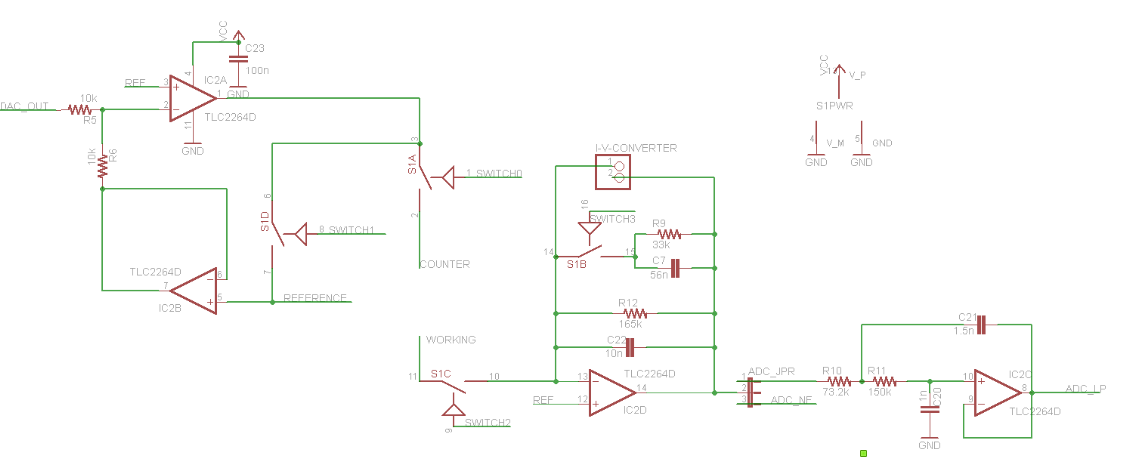I am trying to build an Arduino version of the voltammetry thing described in this paper. Before questions here is a little background for those who don't know what voltammetry is.
This device works with three electrodes, working electrode (WE), counter electrode (CE), reference electrode (RE), immersed in a solution (containing the sample and electrolytes). A potential (fixed, linearly increasing or cyclic) is applied between CE and WE, and if high enough, redox processes happen on these electrodes and some current flows between them. The reference electrode is there to provide a fixed V reference. The device must measure the current flowing from CE to WE and the voltage between RE an WE in order to build a voltammogram (x=V, y=I).
Here a simplified version of the schematics:

simulate this circuit – Schematic created using CircuitLab
The original project use an Atmel XMEGA. Vref is internal 1V. Op amp single supply is 5V.
- How does that feedback work? Hint: when DAC put out, for example, 2V referred to ground, the opamp must put out 2V between CE and RE. No current must flow through RE.
- Arduino does not have a DAC, can I build a low pass PWM filter on top of the first op amp or it is better to have two RC filters before it?
EDIT
Added original schematics
(Note: S1D is open during operation while S1A and S1C are closed, those switches are for dry tests)


